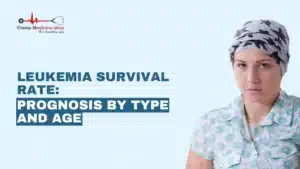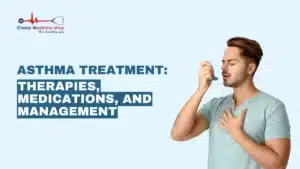Some people consider working from home too pleasant and comfy, but is it that pleasant? All you need to do is wake up and log in from your laptop or desktop. You wouldn’t have to interact with anyone; instead, you can spend time sleeping or watching your favorite show. But can it prove to be healthy for you? The risk of obesity has increased manifold as people adapt to the work from home culture.
We all are stuck at home due to the coronavirus pandemic, and most of us are working from home. Unfortunately, people who work from home are at a greater risk of diabetes and obesity because of a significant decrease in physical activity. Further, escalating the chances of catching the coronavirus. How? You will know it by the time you finish reading the article.
This post will shed some light on the symptoms of obesity, how you can prevent it, and how your chances of catching the coronavirus are high if you are obese.
What are the warning signs of obesity?
Obesity is a chronic health condition that affects many children, teenagers, and adults. Obesity rates among youngsters in the United States have doubled since 1980, while obesity rates among teens have tripled.
About 17% of children between the ages of 2 to 19 are obese, compared to over 35% of adults considered obese. Although putting on a few extra pounds may seem not a big issue regarding an individual’s overall health. But weight gain can quickly escalate to severe medical conditions.
FREQUENT SYMPTOMS FOR ADULTS:
Obesity symptoms can have a detrimental influence on one’s daily life. Adults may have the following warning signs:
- Shortness of breath
- Accumulation of excess body fat (particularly around the waist)
- Snoring
- Sweating (more than usual)
- Problems with the skin (from moisture accumulation in the folds of skinutti)
- Trouble sleeping
- Fatigue (from mild to extreme)
- Inability to carry out basic physical tasks (that one could efficiently perform before weight gain)
- Psychological impact (negative self-esteem, depression, shame, social isolation)
- Pain (commonly in the back and joints)
FREQUENT SYMPTOMS FOR CHILDREN AND ADOLESCENTS:
According to the World Health Organization, more than 340 million children and adolescents aged 5 to 19 were overweight or obese in 2016. According to Boston Children’s Hospital, the rate of pediatric obesity has quadrupled in the last 30 years.
Obesity in children can manifest itself in a variety of ways, including:
- Fatty tissue deposits (may be noticeable in the breast area)
- Eating disorders
- Acanthosis nigricans is a kind of acanthosis (dark velvety skin around the neck and the other regions)
- Stretch marks on the hips and back are a common occurrence.
- Sleep apnoea
- Shortness of breath with physical activity
- Constipation
- Poor self-esteem
- GI reflux
- Problems with orthopedics (such as flat feet or dislocated hips)
- Early puberty in girls/delayed puberty in boys
Also read: Obesity In America- The Biggest Threat he Country’s Future
How to Prevent Obesity?
The earlier onset of type 2 diabetes, obesity-related depression, heart disease, blood vessel disease, and social isolation in teens and children are often seen by healthcare professionals and doctors. In addition, the risk factors become more prominent the longer a person is fat.
Given the chronic illnesses and problems linked with obesity and the fact that obesity is difficult to cure, obesity prevention is vitally essential. Failing to prevent such a disease would increase your chances of catching the coronavirus.
One of the primary reasons that prevention of obesity is vital in children is because the likelihood of childhood obesity persisting into adulthood increases as the child grows older. This puts the person at increased risk of high blood pressure, type 2 diabetes, and heart disease. The following points would answer how to prevent obesity in infants, teens and children, and adults.
Being an obese increases the risk of some complications like type 2 diabetes, heart disease, heart failure, diabetes, high cholesterol, heart stroke, etc. The doctor may prescribe relevant medications for them like Lantus Vial 10ml, Enapril 5 Mg, Atorva 5 Mg,etc
INFANTS:
As per the Centers for Disease Control and Prevention and the American Academy of Pediatrics, breastfed babies are less likely to become overweight or obese. According to the CDC, the longer a baby is breastfed, the less likely he or she is to become overweight as an adult.
Many formula-fed babies, on the other hand, grow up to be healthy adults. Therefore, if your kid was not nursed, it does not imply they will not be able to maintain a healthy weight as an adult.
TEENS AND CHILDREN:
Young people generally become overweight or obese because of poor eating patterns and habits and lack of being physically active. Genetics and lifestyle also contribute to the status of a child’s weight. Recommendations for the prevention of overweight and obesity during teenage and childhood include:

- Gradually work to change family eating patterns and habits and activity levels rather than focusing on a child’s weight.
- Be a role model for others. Parents who consume nutritious meals and engage in particular physical activities set an example for their children, making them more likely to follow suit.
- Encourage physical activity. Children must devote at least 60 minutes to moderate physical activity every day. Try to work out at home and prevent going out to avoid catching the deadly coronavirus.
- Reduce screen time in front of the computer and television to less than 1 to 2 hours daily.
- Encourage children to eat only when hungry and ask them to eat slowly.
- Keep the fridge stocked with fat-free or low-fat milk, fresh fruits, and vegetables instead of snacks and soft drinks high in sugar and fat.
- Serve at least five servings of fruits and vegetables daily.
- Instead of sugary drinks, encourage your kids to drink water. Among these are soft drinks, sports drinks, and fruit juice drinks.
ADULTS:
Many of the weight loss and weight-maintenance treatments also serve to avoid obesity. Obesity may be avoided by improving eating habits and increasing physical exercise. Adults may benefit from the following suggestions:
- Consume around 5 to 9 servings of fruits and vegetables each day. 1 cup of raw vegetables, 1/2 cup of cooked vegetables, or vegetable juice is a vegetable serving.
- A fruit serving is one piece of small to medium fresh fruit, 1/2 cup of canned or fresh fruit or fruit juice, or 1/4 cup of dried fruit.
- Maintain a food diary of what you ate, where you ate, and how you were feeling before and after eating.
- To discover proper portion amounts, measure and weigh your meal. A 3-ounce portion of beef, for example, is about the size of a deck of cards.
- Never order foods from the menu that are too big to eat.
- Only consume whole-grain items like brown rice and whole-wheat bread. Avoid refined white sugar, high-fructose corn syrup, flour, and saturated fat in highly processed meals.
- Lowering portion sizes and eating from a smaller plate may aid weight loss.
- During the day, find methods to get at least 10 to 15 minutes of physical exercise. It’s a good idea to start by walking around the block or up and down a few flights of stairs.
- Aim for 60 to 90 minutes of moderate to intense physical exercise three to four times each week. Walking a 15-minute mile or hoeing and tending a garden are examples of moderate-intensity practice. Playing singles, tennis, or running are examples of more intense activities. Exercise at home and avoid going out so as not to catch the coronavirus.
Obesity and Covid 19:
Obesity could make the coronavirus infection more severe among individuals, a new study in the medical journal The Lancet says. “[I]n populations with a high prevalence of obesity, coronavirus would affect younger populations more than previously reported,” it stated. Common comorbidities–conditions that are known to result in increased risk in patients with coronavirus–have been hypertension, cardiovascular diseases, and diabetes, but as the pandemic hit the United States in late March 2020, Johns Hopkins Hospital started admitting younger patients to the intensive care units or ICUs, many of whom were also obese.
India has the third-highest proportion of overweight or obese people among all countries, with 20% of adults and 11% of adolescents falling into this category. The health condition has been found to affect the elderly mainly. According to the study, the median age of 1,591 ICU patients in Italy was 63 years, and only 13% of the patients were younger than 51 years. Obesity as comorbidity has been discovered to be especially significant in the United States, where approximately 40% of the population is obese.
The researchers found that by analyzing the age and body mass index (BMI) of 265 patients infected with the coronavirus infection, admitted to the ICU in six university hospitals in the United States.
Conclusion
Obesity impairs the immune responses to viral infections. It encourages other comorbidities such as hypertension and diabetes and adversely affects cardiovascular function. The study even suggested that public messaging needs to reach the younger adults, the severity of symptoms required for coronavirus testing should be reduced for obese individuals, and the at-risk obese population should be put under greater vigilance to reduce the spread of the coronavirus infection.














